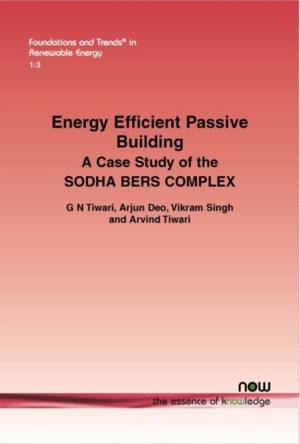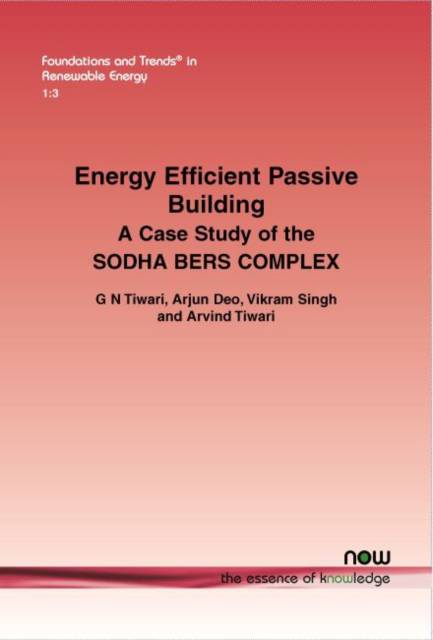
- Retrait gratuit dans votre magasin Club
- 7.000.000 titres dans notre catalogue
- Payer en toute sécurité
- Toujours un magasin près de chez vous
- Retrait gratuit dans votre magasin Club
- 7.000.0000 titres dans notre catalogue
- Payer en toute sécurité
- Toujours un magasin près de chez vous
Energy Efficient Passive Building
A Case Study of the Sodha Bers Complex
G N Tiwari, Arjun Deo, Vikram Singh, Arvind TiwariDescription
This monograph focuses on a case study of a newly constructed passive cooled four-story building in a composite climate. The building at the heart of the case study is known as SODHA BERS COMPLEX (SBC) and is situated in Varanasi, India. In the design of the SBC building, most traditional cooling concepts like orientation, cross ventilation, day lighting, unglazed Trombe wall, earth sheltering, wind towers, and so on, were incorporated. Furthermore, a solar water heating system, roof top PV system and photovoltaic thermal greenhouse dryer were integrated to meet the energy demand of the building. The total initial embodied energy, CO₂ emissions, annual energy saving and CO2 credit of the SBC were evaluated as part of the case study. Based on these evaluations, it was observed that during harsh summer and cold climatic conditions, the earth sheltering/basement ( 28 ) and first and second floors ( 18 ) are the most comfortable areas from a passive cooling/heating point of view respectively. In addition, it was observed that there are about 4740 tons of earned CO2 credit with (i) a payback period of 20 years and (ii) a unit of energy saving of 3kWh for an average 10 temperature difference between room and ambient air temperature.
Spécifications
Parties prenantes
- Auteur(s) :
- Editeur:
Contenu
- Nombre de pages :
- 94
- Langue:
- Anglais
- Collection :
- Tome:
- n° 3
Caractéristiques
- EAN:
- 9781680831962
- Date de parution :
- 23-11-16
- Format:
- Livre broché
- Format numérique:
- Trade paperback (VS)
- Dimensions :
- 156 mm x 234 mm
- Poids :
- 145 g

Les avis
Nous publions uniquement les avis qui respectent les conditions requises. Consultez nos conditions pour les avis.






